The views expressed herein are those of the writer and do not necessarily represent the opinions or editorial position of iWitness News. Opinion pieces can be submitted to [email protected]
The 20,000 stayover tourists who visited St. Vincent Island (SVI) in 2015 (see essay number 33 below) accounted for 0.07 percent of the total of nearly 29 million foreign holidayers who visited the Caribbean last year. This works out to one Vincentian tourist for every 14,350 Caribbean tourist.
The prevailing wisdom in St. Vincent and the Grenadines (SVG) is that these rock bottom figures are because of the absence of an international airport on the mainland.
Not only does this opinion pervade the public consciousness, it is the view of the mainstream media as well:
“One obvious economic possibility emanating from having an international airport is tourism. Our country has many attractions but we have not been able to fully maximize the benefits which could be derived because of limitations in accessing this country by air” (“The Argyle International Airport editorial opinion, Searchlight newspaper, January 22, 2016).
Three allegedly self-evident truths inform these two sentences. First, a new international airport will obviously stimulate tourism. Second, there is an inescapable link between the absence of an international airport and our inability to maximize the benefits of our attractions. Third, the absence of an international airport represents an inexorable limitation in accessing this country by air (even though there is an international airport in Canouan and three close by in neighbouring countries).
It has been my contention in all of these essays that these popular axioms need to be justified by their ability to generate or substantiate factual evidence.
The most influential expression of the Searchlight position comes from no less a tourism guru than the Prime Minister himself, the Honourable Dr. Ralph E. Gonsalves, who in a “historic address” at the Methodist Church Hall on his August 8, 2005 birthday argued that:
“Does St. Vincent and the Grenadines really need an international airport?
…. Having studied this issue for many years, it is clear to the ULP [Unity Labour Party] administration and its leadership that the full realisation of the potential of our country’s growth and development hinge on an international airport, among other vital considerations …. The requisites of economic diversification and regional and international competitiveness demand an international airport. Our country’s tourism potential would not be fully realised unless we build an international airport. And tourism is likely to be our main foreign exchange earner for a long time to come…. Foreign investors often shy away from St. Vincent and the Grenadines when the limitations of air access arise due to the absence of an international airport…” (see essay number 21 below for this reference).
As I have already argued, “Having studied this issue for many years” certainly did not involve carrying out a comprehensive economic feasibility study (see essay 21). Given three consecutive election wins since this famous speech which promised the completion and operation of an international airport during the following mandate, a pledge that has gone unmet the same three times in a row, one is left to wonder whether the issue the Prime Minister really “studied … for many years” was how the sheer act of building an airport would keep him in power from one election cycle to the next.
A careful feasibility study, had it been undertaken, would certainly have compared our local tourism situation, including the “many attractions” the Searchlight newspaper claims we have, with those of analogous or otherwise relevant regional locales, among the most informative of which would have been our Eastern Caribbean Currency Union partner, the Commonwealth of Dominica, a nation with which we share many topographical and natural features as well as the absence of an international airport, and our very own Grenadines islands, to assess whether our meagre mainland tourism numbers do in fact reflect the lack of non-stop flights from North America and Western Europe.
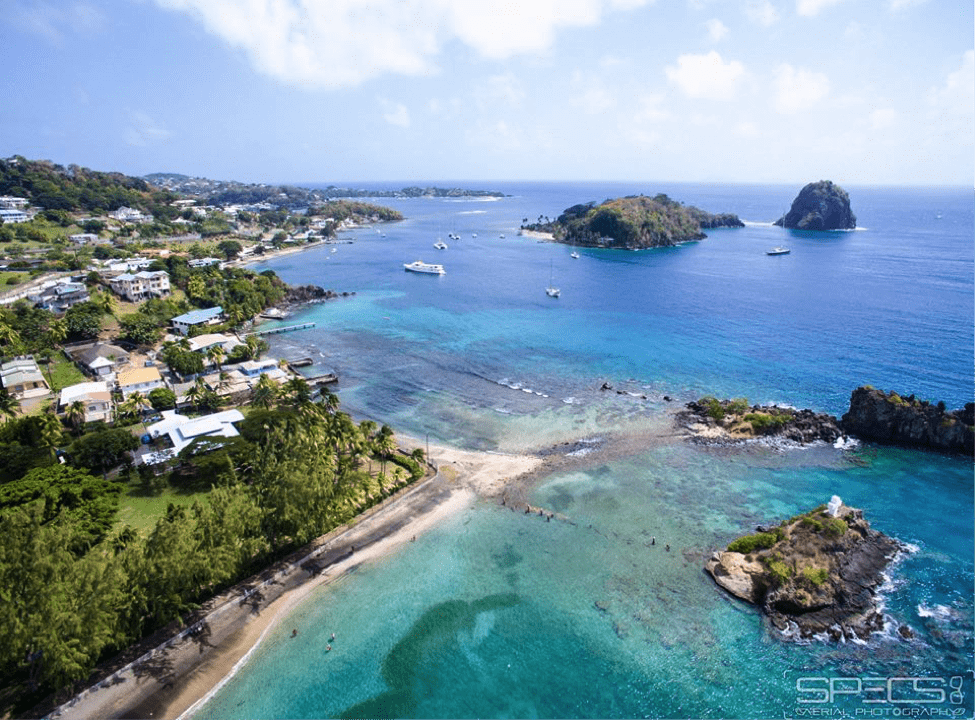
The aim of this essay is to do just that based on the figures in Table 1.
Table 1. Foreign Tourist Visitors, 2015
| Stopover Air Arrivals | Cruise Ship | Yacht | Total | |
| Dominica | 48,835 | 279,474 | 8,243 | 336,552 |
| St. Vincent Island | 20,000 | 82,079 | 6,358 | 108,437 |
| The Grenadines | 13,964 | 27,261 | 41,112 | 82,337 |
Source. (SVI data available on request from the SVG Tourism Authority)
The data in Table 1 provide no evidence to support the Prime Minister’s position that building an international airport at Argyle would inevitably create a surge in mainland tourism demand.
Dominica has over four times more overall holiday visitors than St. Vincent Island (for tabular data on the difference in arrivals between 2001-15 (see Herbert “Haz” Samuel’s outstanding recent essay); cruise ship passengers arriving in Dominica are nearly three and a half times higher than those arriving in Kingstown; stopover air arrivals of tourists to Dominica are nearly four times higher than such arrivals to our mainland; such arrivals to the tiny string of Grenadines islands are only 30 percent below arrivals to the mainland; cruise ship passengers landing in The Grenadines are only one-third the level on the mainland despite the fact that neither Bequia, nor Canouan, nor Union Island have cruise ship piers, thereby forcing passengers to come ashore using small and cramped tenders, a practice that deters many people from landing, especially those with handicaps; the tiny Grenadines have over six times more yacht visitors than the mainland; and the much larger and more populous mainland of St. Vincent has only 24 percent more tourist visitors than the Grenadines, a figure that surely misrepresents the actual number of stopover visitors (see essay 36).
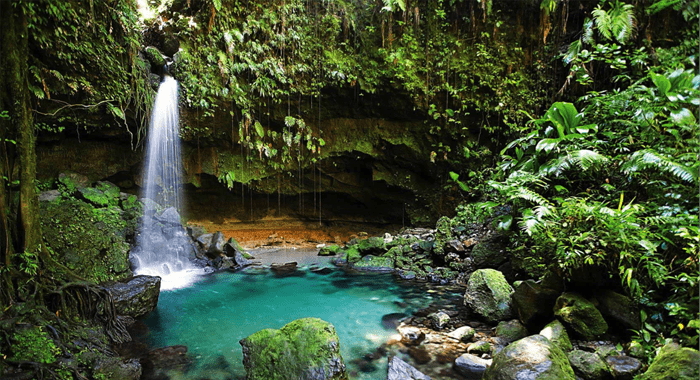
What accounts for these dramatic differences in tourist visits between these three places? Again, implicit in the Prime Minister’s statements is that the primary cause is the absence of an international airport on the mainland, an assumption with no supporting evidence.
First, all over the world, but especially in the tropics, tourism demand is what pushes the supply of holiday infrastructure such as airports, roads, hotels, and resorts, as the recent partial opening up of Cuba to American tourists has clearly shown, an issue I will detail in a subsequent essay.
Second, tourism demand is based on existing tourist attractions, not ease of access or convenience of travel which explains why nearly 29 million foreign tourists visited the Caribbean last year in search of: miles of white sand beaches; shallow torquoise inshore waters; stunning vistas; watersports galore (swimming, snorkeling, surfing, scuba diving, deep sea fishing); luxurious accommodation; outstanding local and international cuisine; friendly people and good personal safety; centuries-old cultures and festivals; and exciting recreational and adventure activities.
Though we have “many attractions” on the mainland (especially beautiful scenery and good hiking possibilities), we still fall well short of what is available elsewhere.
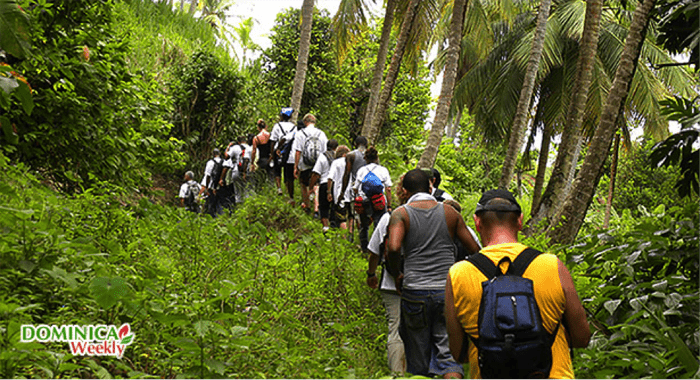
In the Caribbean, as in much of the tropical world, the most important tourist attractions are endless strands of white sand beach, awe-inspiring seaside views, shallow inshore waters, and calm turquoise seas. This is why our Grenadines are such a renowned sailing area and receive so many visitors. It is also why most national expansion in hotel occupancy is occurring there rather than on the mainland to meet growing demand, as the recent ground-breaking of a new resort in Bequia proves. Conversely, this is why our ramshackle and rusting airport will always attract few visitors.
But even in the absence of ocean attractions, tourists can also be captured by the allure of an island like Dominica which features: glorious scenery; a small sparsely distributed population lending an aura of sojourning in a nearly uninhabited tropical paradise; a network of well-groomed hiking trails, including the new 84 km (115 miles) Waitukubuli National Trail, a first of its kind in the Caribbean; a boiling lake; a freshwater lake; hundreds of rivers, many of them navigable and featuring canoeing, river rafting, and tubing; seven large and small waterfalls and associated bathing pools easily accessible by car via a network of well-maintained roads crisscrossing the country; numerous sulphur springs, hot pools, and thermal spas; a myriad of eco, hiking, camping, and excursion tours; snorkeling and scuba diving; a Carib cultural village by the sea (Kalinago Barana Aute), in the heart of the aboriginal territory; lots of traditional native arts and crafts; a unique 300-year-old market square in the capital; deep sea fishing; and horseback riding.
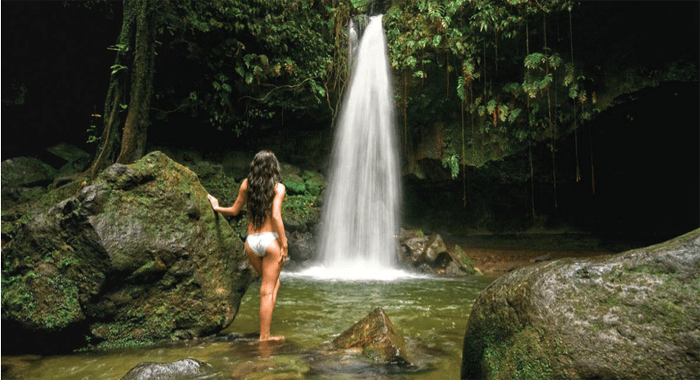
Surely, Dominica deserves its name: “the nature island”.
TripAdvisor, the largest travel site in the world, lists 202 things to do and see in Dominica (hikes, tours, waterfalls, spas, boat trips, etc.). The corresponding number for SVI is three times lower at 68.
What TripAdvisor fails to mention is the impressive way Dominica, a country far poorer than us, advertises, protects, and enhances its tourist resources and support services, including the professional manner in which it documents its visitor statistics, with a much smaller government budget and workforce than ours.

Overall, then, our mainland is simply not ready in resources, maintenance, imagination, talent, motivation, and promotion to receive many more holiday visitors.
Stated more simply the old Chinese proverb that “a fish rots from the head down” — in this context meaning that if our tourism people are inept, it is because of the incompetence of those at the top — is actually only half true. In our case, the tourism fish has always rotted simultaneously from both head and tail.
The inescapable conclusion is that: (1) in the absence of actual or potential demand based on reliable and believable forecasts which are, in turn, (2) grounded in the sheer number and/or desirability of local attractions and activities, (3) together with the inept promotion, enhancement, and protection of these attractions and activities, the very construction of a new airport aimed at boosting passenger arrivals, has been an extraordinary fool’s errand.
Not only are our tourism numbers almost non-existent by Caribbean levels, they have actually declined in the past 16 years under Unity Labour Party rule (see essay 27 below), the number of advertised rooms on the mainland is a lowly 750 (see essay 36 below), our premier resort at Buccament Bay is teetering on the brink of closure, and many other small hotels, resorts, and guest houses are barely treading water or have closed in recent years.
Is there any doubt that the combination of all these factors are why international carriers — bottom-line obsessed corporations that conduct detailed cost-benefit studies before signing on to new routes — are reluctant to contract to fly to the unfinished airport at Argyle?
Except for the opening of Buccament Bay Hotel and Resort in 2011 (with less than a 100 of its promised 1,200 rooms built), our holiday room numbers have not changed much in the past 10-15 years, if not longer, even though, like many other Caribbean islands, we have had various kinds of visitor accommodation in the form of inns, boarding houses, and small hotels for 100 years or more. But while holiday visitor numbers kept going up elsewhere (e.g., Bermuda, the Bahamas, Cuba, Jamaica, St. Lucia, Barbados, and Grenada) long before any international air travel, we reached nearly our limit on new hotel demand long ago.
This assertion does not include the Grenadines, our captivating necklace of tiny islands, whose tourism numbers and revenue keep going up as new hotels, resorts, and villas have continued to be built year after year for the past six decades. Why has this Grenadines development occurred while comparable projects on the mainland have been far fewer in number and so inferior in quality?
A comparison of the photos of Palm Island and Young Island — a resort whose lease has been for sale for decades — answers this question.

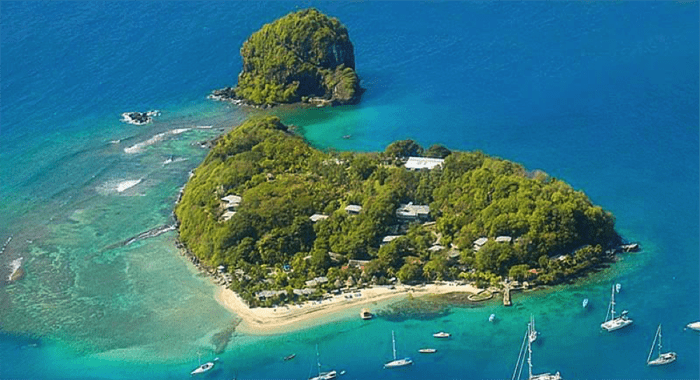
So, why does St. Vincent Island have so few tourist visitors? Actually, this question is misleading because it implies that we could substantially increase these numbers by doing X, Y, or Z. My conclusion, explicitly detailed in 37 essays, is that notwithstanding our anaemic tourism efforts, the mainland has just about as many tourist visitors as its attractions deserve.
***
This is the 37th in a series of essays on the folly of the proposed Argyle International Airport.
My other AIA can be found below:
- Get ready for a November election!
- Lessons for Argyle Airport from Canada’s Montreal–Mirabel Int’l
- Lessons for Argyle Int’l Airport from the cruise industry
- Lessons from Target Canada for Argyle Int’l Airport
- Lessons from Trinidad & Tobago for Argyle Int’l Airport
- The Dark Side of Tourism: Lessons for Argyle Airport
- Why Argyle Won’t Fly: Lessons from Dominica
- Ken Boyea and the Phantom City at Arnos Vale
- Airport Envy Vincy-Style
- Fully realising our country’s tourism potential
- Airport without a cause
- The unnatural place for an international airport
- The Potemkin Folly at Argyle
- False patriotism and deceitful promises at Argyle
- Airport politics and betrayal Vincy-Style
- Phony airport completion election promises, Vincy-style
- Is Argyle Airport really a ‘huge game-changer for us?’
- Has the cat got your tongue, Prime Minister?
- More proof that Argyle won’t fly
- Our very own Vincentian cargo cult at Argyle
- The missing Argyle Airport feasibility studies
- The world’s four most amazing abandoned airports
- Farming, fishing, and foolish talk about Argyle International Airport
- Argyle Airport amateur hour
- St. Vincent’s place in the world of travel
- Investing in St. Vincent’s Tourism Industry
- The Argyle Airport prophecy: what the numbers say
- Why Qatar? Why St. Vincent and the Grenadines?
- Did the IMF drink the Comrade’s Kool-Aid?
- Foolish words about Argyle International Airport
- ‘If I come, you will build it’: Lessons from the Maldives for Argyle Airport
- Urban lessons for Argyle International Airport
- Who really lands at Arnos Vale?
- No ticky, No washy — Argyle-Style
- We have met the Vincentian tourism enemy and he is us
- Hotel Saint Vincent
C. ben-David
The opinions presented in this content belong to the author and may not necessarily reflect the perspectives or editorial stance of iWitness News. Opinion pieces can be submitted to [email protected].







Excellent writing, as usual. This piece, mentioning Dominica makes me think of what would happen if you presented this information to a crowd of Vincentians. They would stone you! We are under the fantasy that SVG is the most beautiful place on earth and everyone’s goal in life is to come here. Until Vincentians realize there may be places that people would rather go, we are not going to improve our position. I suppose we are living on a sort of Fantasy Island.
Being stoned would be the least of my worries if people knew who I was as can be seen by the viscous way I have been attacked by the man with a hundred identities, some of them female, in recent weeks just because I hurt his feelings questioning the accuracy of his assertions.
Lostpet, all I have ever wanted if for people to carefully read and contemplate what I have written and to reply respectfully with counter-evidence when they believe my assertions have been wrong in fact, interpretation, or analysis, something that seems beyond many of our people.
I’ve been coming to St Vincent, to escape Canadian winter for about six years now. I quite like the fact there are virtually no tourists on St Vincent per se. If I want tourists I go to Bequia. for the day. At the same time, unlike Dominica, virtually nothing has been developed on St Vincent for an eco tourist like me. I discover things every year, but even simple trails aren’t on any map per se. In Dominica they realized their island was mostly mountain and forest and they developed their assets for the eco tourist. Their trails are actually marked for example. There isn’t much diving and snorkelng though on Dominica. I like to hike and snorkel. It’s a kind of infrastructure you need to attract people, that doesn’t cost much to develop and maintain. Infrastructure like roads and bridges are expensive on a volcanic island, but it’s difficult to get anywhere on St Vincent.I use your minibuses and the north end windward and leeward are a very real problem. Hiking, I often find myself hiking on abandoned British roads that donkey carts used back in the days of sugar plantations. They make great trails. I love St Vincent, was tempted to do some hiking on Dominica, some snorkeling on St Lucia. Do not underestimate Air BnB. There are a lot empty bedrooms in St Vincent that could very quickly be converted to tourist lodging if there was a demand for inexpensive rooms. You really don’t want a lot of very rich tourists. You will become a nation of beggars like Jamaica. Target the poor tourist, like me. Lots of people on St Vincent are richer than me. When I come to St Vincent, I want to live like you do. I usually stay two months, at $50US a night. That money would be one week at Buccament. Nobody in Buccament benefited from the resort. Every employee comes from somewhere else on the island, because of potential theft from the resort. Theft is a serious problem anywhere in St Vincent. People get killed. Tourists get killed. That’s bad for business, and it keeps a lot of tourism out of St Vincent. The rich tourists then stay at resorts like Buccament for their own security. Nobody visits Trinidad as a poor tourist. It’s too dangerous. Cuba though is completely safe. Find your market, then develop infrastructure for them. I recommend poor eco tourists, because they will stay for longer periods of time, and they are more like you, and will have less impact on your society.
Many useful points but you are wrong about the value of tourists like yourself who spend little money but who if came in the tens of thousands would end up destroying the environment you love so much.
So you highlight the Catch-22 of eco-tourism. Few shallow pocketed eco-tourists keep the environment safe but earn little for the country. Hoards of budget-minded eco-tourists like you end up doing more damage than their value-added to the economy.
So, the idea tourist is one who sits on a poolside beach chair all day drinking rum punch while paying $US 500 a night to do so. This is exactly the tourists we want and need.